
6 Day Joined Group Safari Serengeti,Ngorongoro Crater,Lake Manyara, Tarangire
1 day
About this activity
Itinerary
This is a typical itinerary for this product
Stop At: Babati, tanzania, Tarangire National Park 3134 Tanzania
The Park is in Manyara region and covers an area of approximately 2,850 sq km. The name of the park originates from the Tarangire River that crosses the park. The Tarangire River is the primary source of fresh water for wild animals in the Tarangire Ecosystem during the annual dry season. During the dry season thousands of animals concentrate in Tarangire National Park from the surrounding wet-season dispersal and calving areas.
The landscape is composed of granitic ridges, river valley, and swamps. Vegetation is a mix of Acacia wood land,Combretum woodland, seasonally flooded grassland, and Baobab trees.
Dry season in the park starts from June to November(best time to visit) hence expect to sightview common animals such as Zebra, Buffalo, Elephant, Wildebeest, Waterbuck, giraffe, Dik Dik, Impala, Eland, Grant's Gazelle, Vervet Monkey, Banded Mongoose, and Olive baboon.
Tarangire National Park is famous due to its high density of elephants and is documented that the oldest Elephant that gave birth to twins was found at Tarangire.
Also Tarangire is famous because of its Termite Mounds that dot its landscape and good home for dwarf Mongoose.
Tarangire National Park is also home for more than 550 bird species hence attracts the bird enthusiasts.
Duration: 6 hours
Stop At: Lake Manyara National Park Tanzania
The Park is found in between Arusha and Manyara Region. It is situated between Lake M anyara and the Great Rift Valley. The Park is located 130km south west of Arusha It’s administered by the Tanzania National Parks Authority(TANAPA) covering a total surface area of 330sq km including a lake surface covering 230sq km. Lake Manyara is the part of Lake Manyara Biosphere Reserve which include the Marang Reserved Forest and Lake Manyara importart Bird area.
The Lake Manyara is alkaline lake where in its edge provide feeding area for a thousands of flamingo and it’s the only area in Tanzania with large number of birds’ species more than 500 species have been documented in the park. The birds such as Great white pelican, pink-backed pelican,grey heron, yellow –billed stork, marabou stork, greater flamingo and lesser flamingo etc.
The lake also has a number of Fishes such as endangered Oreochromis Amphimelas fish, Cichlid family.
The Park has a variety of diverse habitats such as evergreen underground water forest, woodlands in the western shore of the lake, extensive swamps, grassland which provides awide area for wildlife and birds to graze,climb,hide and drink.
While trekking in the Park expect to view different mammals such as Thousands of Wildebeest, Thomson’s & Grant’s Gazelle, Zebra, Bushbuck, Waterbuck, bush elephant, giraffe, baboons, warthogs, hippopotamus, African wild cats, African civet, spotted hyena, honey badge, black-backed, climbing tree lion, leopard.
The Park has a great number of butterflies, 180 species have been documented in the Park.
The Rain season starts at November to April so the best time to visit is from July to September since it’s the dry season.
Duration: 6 hours
Stop At: Ngorongoro Crater, Ngorongoro, Ngorongoro Conservation Area Tanzania
It’s the one of the world’s largest intact volcanic caldera forming about 265sq km surface area with sides of 600m deep. The Park is located at 118km (3hour drive)West of Arusha and it is around 8300sq km in size. The park is fertile volcanic land soil which supports many habitats such as grassland, swamps and forest which provide a huge area for wildlife to graze , climb, hide. Inside the Park there is a water source known as Lake Makat”(soda lake) Maasai word meaning Salt” home of various birds species more than 400 species have been recorded and hydrating(drinking) other wildlife.
Ngoro Ngoro National Park is the only Park in Tanzania that provides yearly around big 5 (endangered black rhino, black manned lions, big cats, elephants, buffalo)game viewing and probably once in a single day of visiting.
Also the Park is well known for the existence of Maasai families who diverted from Serengeti Plains and built in temporary villages in circular homesteads called Bomas.
It’s is the only Park that gets chilly at night hence it’s important for travellers to adhere to the best clothing to bare the condition.
Other common animals expected to sight Wildebeest, Gazelle, Spotted Hyena, Golden –Jackal, Bat-eared foxi,Hippopotamus,EastAfrican Wilddog,African Leopard,Ungulates,Waterbucks,Buffalo,Eland, Serval. Absenties wildlife are Giraffe, Oribi, Topi,Spotted Hyena,African Leopard,Chetah,Impala which are rarely seen in the Park.
Ngorongoro National Park is well known for seat of Humanity after the discovery of the earliest known specimen of the human genus in Olduvai Gorge hence best site to understand early human evolution pioneered by Mary and Louis Leakey.
The Park is also well known for active volcanic mountain in Doinyo Lengai(Mountain of God).
Inside the Park there are many water sources which open picnic to tourists and a huge swamp fed by springs(Ngoitokitok streams,Lerai Streams).
The park is also well known for its densest population of blacked maned Lions,Ungulates and Serval.
The best time to visit the Park is between June-September.
Duration: 6 hours
Stop At: Serengeti National Park Tanzania
It’s an undoubtedly the best known wildlife sanctuary in the World and Africa in Particularly. The Park is found in Mara and Simiyu and located 335km from Arusha Region. The Park is 14,763 sq km in size. The Park is divided into three main zones,namley; Southern zone, westrern corridor and Northern zone. The ditance from South to Western Corridor 67.5(1hour drive). And from Central to North is 140km(2.5hours drive)
Southern/Central/Seronera Valley; Maasai called it “Serengit” meaning the land of endless plains. Southern Zone has an endless plain accumulated with savannah grassland which provide the wide area throughout the year for the wildlife such as Wildebeest, Zebra, Coke’s Hartebeest, waterbuck, Grant’s and Thomson Gazelle, Impalla, to graze. In Seronera Valley there is dotted acacia vegetation which appears in a group like structure known as Kopjes which provides a good vantage for predators spot their prey and a refuge for Hyrax, Pythons and reptiles such as lizards. African Leopard are commonly seen.
Western Corridor contains the swampy wooded land, dense underground forest with a black cotton soil which does sparse in heavy rain. Hence home for yellow and olive Baboons, Patas Monkeys, Black and White Colobus of all kind climbing here and there. The Zone is allocated with a Grumeti and Mbalageti Rivers which drains their water to Lake Victoria hence filled with a lot of Crocodiles, Hippopotamus, Martial Eagles and varieties of 400birds species has been documented. Migration passes from May to July
Northern Zone(Lobo Area) has rainforest dense woodland, mountainous vegetation. It is filled with Mara River which do contain a lot of large Nile Crocodiles (almost 5m lures below the surface.) which block the Wildlife Migrating in their way to North of Kenya’s Reserved Maasai Mara. Home for Elephant, Giraffe and Dik Dik.
Serengeti National Park is well known in the World and Africa in particular due to its Great Wildebeest migration due to changes of different climatic condition. Also it’s a place whereby different scientist have been undertaking researches and confirm the existence of an early man in Olduvai Gorge about 2millions years ago and established two world heritage sites and two biosphere reserves.
Serengeti is well known in the world for its abundance of wildlife and high Biodiversity such that 2million Wildebeest, 250,00Zebra, 500,000Gazelle, 3,000 Lions, 53,000 African Buffalo,5,000 Bush Elephant, 31 Eastern Black Rhino,1000 African Leopard, 3,500 spotted hyena, 225 Chetah,300 Wilddog have been documented.
Some rarely seen species of antelope are also present in Serengeti National Park, such as common Eland, Klipspringer, Roan Antelope, bushbuck, greater kudu, Fringe-eared Oryx and Dik Dik
Carnivores apart from the big five that are commonly seen are Chetah, two species of Jackals, Spotted Hyena, African Golden Wolf, Honey Badger, Stripped Hyena, 7 species of Mongooses, 2 species of Otters
Other mammals include Aardvark, Aardwolf, bat-eared fox, ground pangolin, Crested Porcupine, three species of Hyraxes and Cape Hare.
Reptiles in Serengeti National Park include Nile crocodile, leopard tortoise, serrated hinged terrapin, rainbow agama, Nile monitor, chameleons, African python, black mamba, black-necked spitting cobra, puff adder.
Serengeti National Park has also great ornithological interest, boasting about more than 500 bird species including; Masai Ostrich, Secretary bird, Kori Bustards, Helmeted Guineafowls, Southern Ground Hornbill, Crowned Cranes, Marabou storks, Yellow-Billed Stork, Lesser Flamingo, Martial Eagles, lovebirds, Oxpecker and many species of Vultures.
Duration: 1 day
Read more
Show less
This is a typical itinerary for this product
Stop At: Babati, tanzania, Tarangire National Park 3134 Tanzania
The Park is in Manyara region and covers an area of approximately 2,850 sq km. The name of the park originates from the Tarangire River that crosses the park. The Tarangire River is the primary source of fresh water for wild animals in the Tarangire Ecosystem during the annual dry season. During the dry season thousands of animals concentrate in Tarangire National Park from the surrounding wet-season dispersal and calving areas.
The landscape is composed of granitic ridges, river valley, and swamps. Vegetation is a mix of Acacia wood land,Combretum woodland, seasonally flooded grassland, and Baobab trees.
Dry season in the park starts from June to November(best time to visit) hence expect to sightview common animals such as Zebra, Buffalo, Elephant, Wildebeest, Waterbuck, giraffe, Dik Dik, Impala, Eland, Grant's Gazelle, Vervet Monkey, Banded Mongoose, and Olive baboon.
Tarangire National Park is famous due to its high density of elephants and is documented that the oldest Elephant that gave birth to twins was found at Tarangire.
Also Tarangire is famous because of its Termite Mounds that dot its landscape and good home for dwarf Mongoose.
Tarangire National Park is also home for more than 550 bird species hence attracts the bird enthusiasts.
Duration: 6 hours
Stop At: Lake Manyara National Park Tanzania
The Park is found in between Arusha and Manyara Region. It is situated between Lake M anyara and the Great Rift Valley. The Park is located 130km south west of Arusha It’s administered by the Tanzania National Parks Authority(TANAPA) covering a total surface area of 330sq km including a lake surface covering 230sq km. Lake Manyara is the part of Lake Manyara Biosphere Reserve which include the Marang Reserved Forest and Lake Manyara importart Bird area.
The Lake Manyara is alkaline lake where in its edge provide feeding area for a thousands of flamingo and it’s the only area in Tanzania with large number of birds’ species more than 500 species have been documented in the park. The birds such as Great white pelican, pink-backed pelican,grey heron, yellow –billed stork, marabou stork, greater flamingo and lesser flamingo etc.
The lake also has a number of Fishes such as endangered Oreochromis Amphimelas fish, Cichlid family.
The Park has a variety of diverse habitats such as evergreen underground water forest, woodlands in the western shore of the lake, extensive swamps, grassland which provides awide area for wildlife and birds to graze,climb,hide and drink.
While trekking in the Park expect to view different mammals such as Thousands of Wildebeest, Thomson’s & Grant’s Gazelle, Zebra, Bushbuck, Waterbuck, bush elephant, giraffe, baboons, warthogs, hippopotamus, African wild cats, African civet, spotted hyena, honey badge, black-backed, climbing tree lion, leopard.
The Park has a great number of butterflies, 180 species have been documented in the Park.
The Rain season starts at November to April so the best time to visit is from July to September since it’s the dry season.
Duration: 6 hours
Stop At: Ngorongoro Crater, Ngorongoro, Ngorongoro Conservation Area Tanzania
It’s the one of the world’s largest intact volcanic caldera forming about 265sq km surface area with sides of 600m deep. The Park is located at 118km (3hour drive)West of Arusha and it is around 8300sq km in size. The park is fertile volcanic land soil which supports many habitats such as grassland, swamps and forest which provide a huge area for wildlife to graze , climb, hide. Inside the Park there is a water source known as Lake Makat”(soda lake) Maasai word meaning Salt” home of various birds species more than 400 species have been recorded and hydrating(drinking) other wildlife.
Ngoro Ngoro National Park is the only Park in Tanzania that provides yearly around big 5 (endangered black rhino, black manned lions, big cats, elephants, buffalo)game viewing and probably once in a single day of visiting.
Also the Park is well known for the existence of Maasai families who diverted from Serengeti Plains and built in temporary villages in circular homesteads called Bomas.
It’s is the only Park that gets chilly at night hence it’s important for travellers to adhere to the best clothing to bare the condition.
Other common animals expected to sight Wildebeest, Gazelle, Spotted Hyena, Golden –Jackal, Bat-eared foxi,Hippopotamus,EastAfrican Wilddog,African Leopard,Ungulates,Waterbucks,Buffalo,Eland, Serval. Absenties wildlife are Giraffe, Oribi, Topi,Spotted Hyena,African Leopard,Chetah,Impala which are rarely seen in the Park.
Ngorongoro National Park is well known for seat of Humanity after the discovery of the earliest known specimen of the human genus in Olduvai Gorge hence best site to understand early human evolution pioneered by Mary and Louis Leakey.
The Park is also well known for active volcanic mountain in Doinyo Lengai(Mountain of God).
Inside the Park there are many water sources which open picnic to tourists and a huge swamp fed by springs(Ngoitokitok streams,Lerai Streams).
The park is also well known for its densest population of blacked maned Lions,Ungulates and Serval.
The best time to visit the Park is between June-September.
Duration: 6 hours
Stop At: Serengeti National Park Tanzania
It’s an undoubtedly the best known wildlife sanctuary in the World and Africa in Particularly. The Park is found in Mara and Simiyu and located 335km from Arusha Region. The Park is 14,763 sq km in size. The Park is divided into three main zones,namley; Southern zone, westrern corridor and Northern zone. The ditance from South to Western Corridor 67.5(1hour drive). And from Central to North is 140km(2.5hours drive)
Southern/Central/Seronera Valley; Maasai called it “Serengit” meaning the land of endless plains. Southern Zone has an endless plain accumulated with savannah grassland which provide the wide area throughout the year for the wildlife such as Wildebeest, Zebra, Coke’s Hartebeest, waterbuck, Grant’s and Thomson Gazelle, Impalla, to graze. In Seronera Valley there is dotted acacia vegetation which appears in a group like structure known as Kopjes which provides a good vantage for predators spot their prey and a refuge for Hyrax, Pythons and reptiles such as lizards. African Leopard are commonly seen.
Western Corridor contains the swampy wooded land, dense underground forest with a black cotton soil which does sparse in heavy rain. Hence home for yellow and olive Baboons, Patas Monkeys, Black and White Colobus of all kind climbing here and there. The Zone is allocated with a Grumeti and Mbalageti Rivers which drains their water to Lake Victoria hence filled with a lot of Crocodiles, Hippopotamus, Martial Eagles and varieties of 400birds species has been documented. Migration passes from May to July
Northern Zone(Lobo Area) has rainforest dense woodland, mountainous vegetation. It is filled with Mara River which do contain a lot of large Nile Crocodiles (almost 5m lures below the surface.) which block the Wildlife Migrating in their way to North of Kenya’s Reserved Maasai Mara. Home for Elephant, Giraffe and Dik Dik.
Serengeti National Park is well known in the World and Africa in particular due to its Great Wildebeest migration due to changes of different climatic condition. Also it’s a place whereby different scientist have been undertaking researches and confirm the existence of an early man in Olduvai Gorge about 2millions years ago and established two world heritage sites and two biosphere reserves.
Serengeti is well known in the world for its abundance of wildlife and high Biodiversity such that 2million Wildebeest, 250,00Zebra, 500,000Gazelle, 3,000 Lions, 53,000 African Buffalo,5,000 Bush Elephant, 31 Eastern Black Rhino,1000 African Leopard, 3,500 spotted hyena, 225 Chetah,300 Wilddog have been documented.
Some rarely seen species of antelope are also present in Serengeti National Park, such as common Eland, Klipspringer, Roan Antelope, bushbuck, greater kudu, Fringe-eared Oryx and Dik Dik
Carnivores apart from the big five that are commonly seen are Chetah, two species of Jackals, Spotted Hyena, African Golden Wolf, Honey Badger, Stripped Hyena, 7 species of Mongooses, 2 species of Otters
Other mammals include Aardvark, Aardwolf, bat-eared fox, ground pangolin, Crested Porcupine, three species of Hyraxes and Cape Hare.
Reptiles in Serengeti National Park include Nile crocodile, leopard tortoise, serrated hinged terrapin, rainbow agama, Nile monitor, chameleons, African python, black mamba, black-necked spitting cobra, puff adder.
Serengeti National Park has also great ornithological interest, boasting about more than 500 bird species including; Masai Ostrich, Secretary bird, Kori Bustards, Helmeted Guineafowls, Southern Ground Hornbill, Crowned Cranes, Marabou storks, Yellow-Billed Stork, Lesser Flamingo, Martial Eagles, lovebirds, Oxpecker and many species of Vultures.
Duration: 1 day
Included
- All Fees and Taxes
- Breakfast
- Lunch
- Dinner
- All activities of game drive and (walking safari if indicated in an itinerary)
- Entry/Admission - Arusha Village Experience
- Entry/Admission - Tarangire National Park
- Entry/Admission - Lake Manyara National Park
- Entry/Admission - Ngorongoro Crater National Park
- Entry/Admission - Serengeti National Park
- Accommodation(camping, mid range or lodge) included in 5 nights before and after the safari
- Sleeping bag
- Bath towels and Soaps
- Other dietary requirements on request
- Free Day tour on Request
- Airport pickup and Drop-off
- A professional driver/guide who can speak English, Spain and French
- Drinking water and Wine
- All camping equipments
- Entry/Admission - Tarangire National Park
- Entry/Admission - Lake Manyara
- Entry/Admission - Ngorongoro Crater
- Entry/Admission - Serengeti National Park
Not included
- Visas
- International Flights
- Travel Insurance
- All things of Personal Nature
- Tips and gratitude for driver Guide and safari cook
Additional
- Confirmation will be received at time of booking
- Wheelchair accessible
- Near public transportation
- Infants must sit on laps
- Infant seats available
- Transportation is wheelchair accessible
- Not recommended for travelers with back problems
- Not recommended for pregnant travelers
- No heart problems or other serious medical conditions
- Most travelers can participate
- This tour/activity will have a maximum of 6 travelers
Features
Tourism
95%
Cultural
65%
Original
30%
Aquatic
20%
You may also like









 See all 18 Collections
See all 18 Collections
Click to discover other experiences
See all

Collections
Ngorongoro Crater
196 Activities
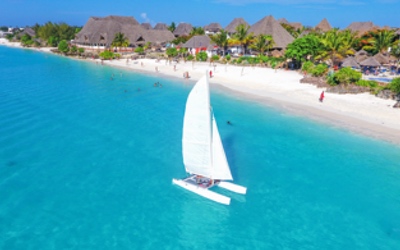
Collections
Beach holidays
10 Activities
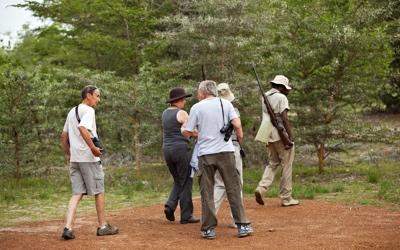
Collections
Walking tour
12 Activities
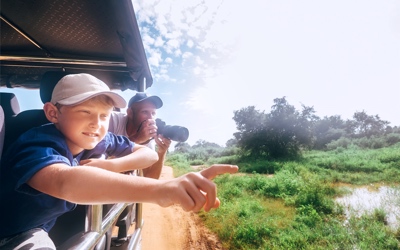
Collections
Family tours
9 Activities
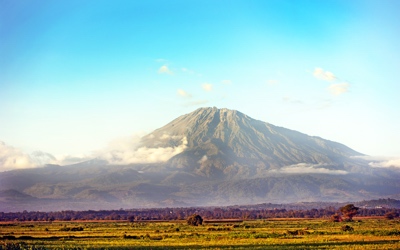
Collections
Luxury Tanzania
27 Activities
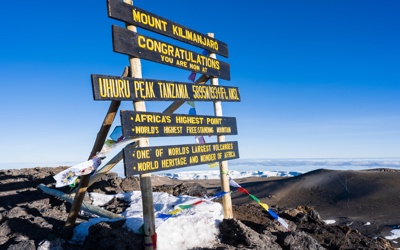
Collections
Trekking & hiking
76 Activities
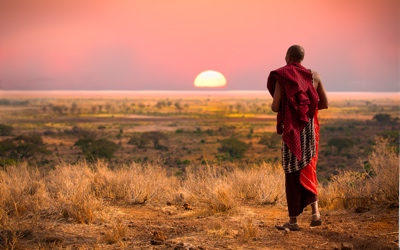
Collections
Cultural activities
24 Activities

Collections
Original
13 Activities

Collections
Migration Safari
58 Activities

Collections
Lodge Adventure Tanzania
52 Activities

